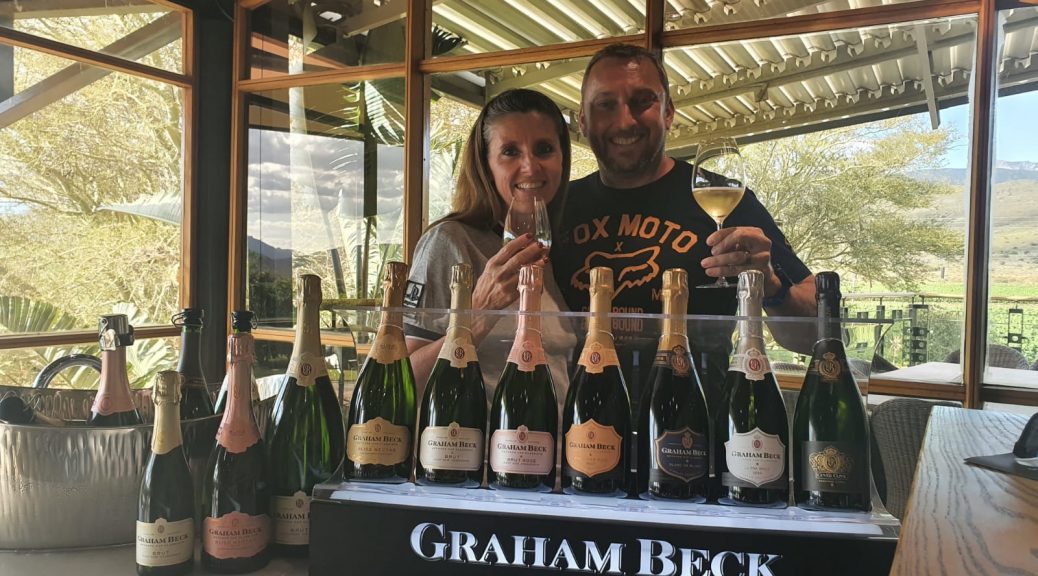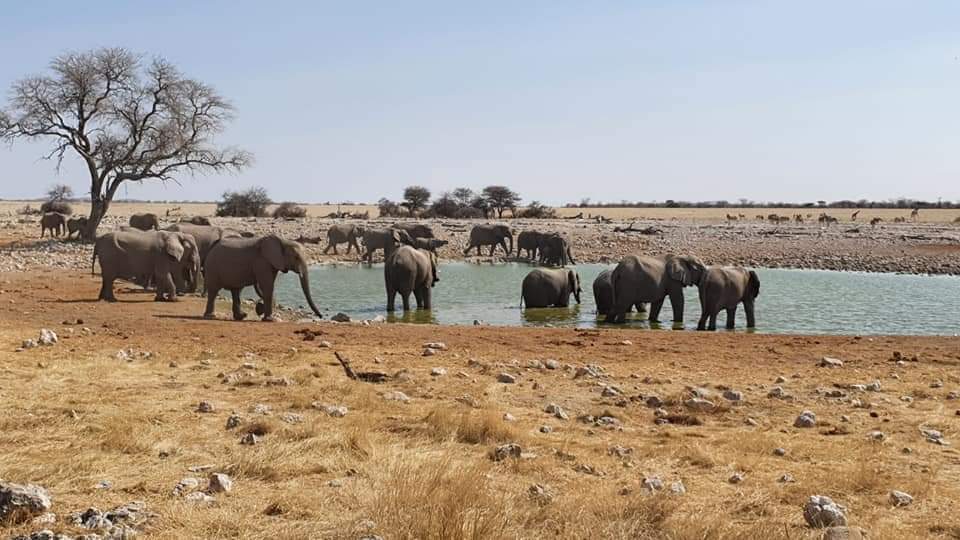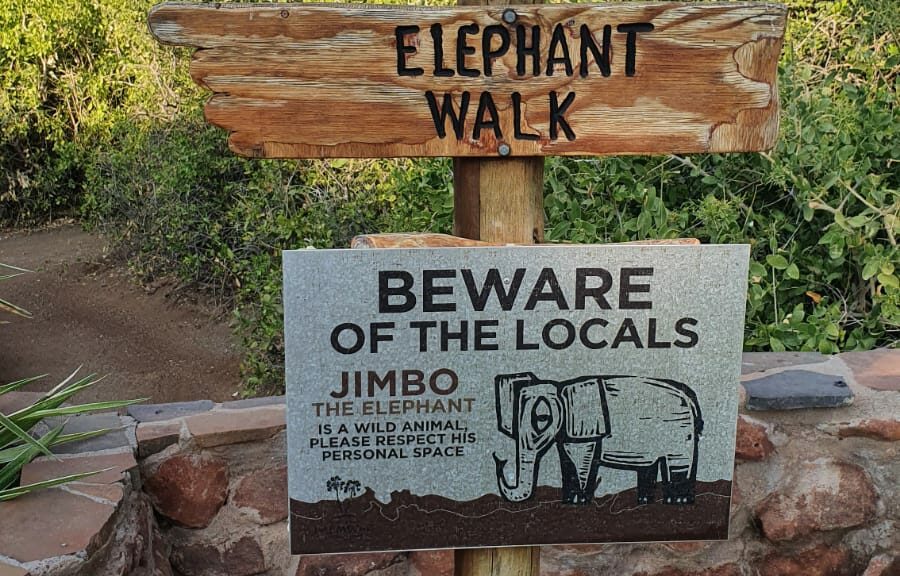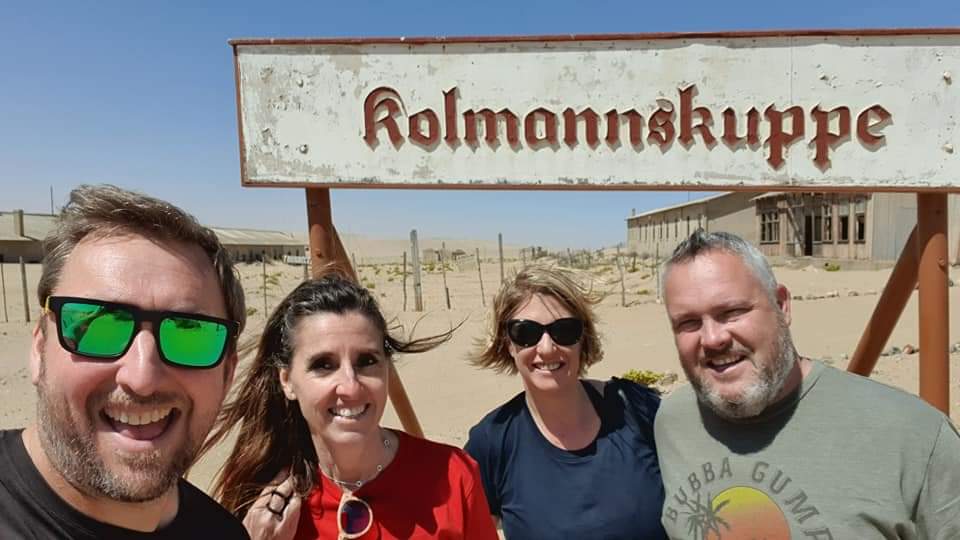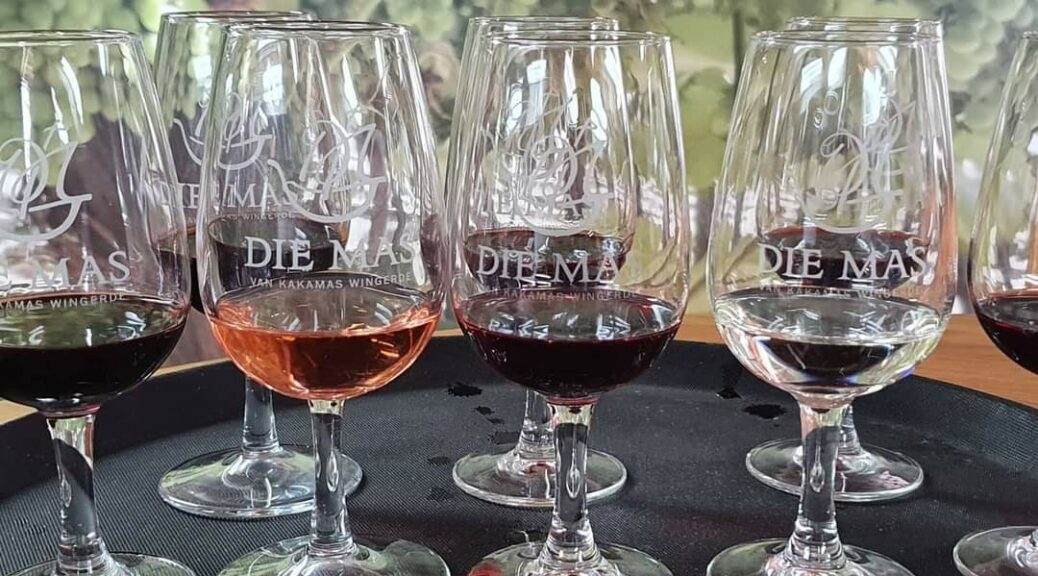KOMMETJIE
14-19 July 2022
Our friend Candy had signed up for a website where you get to house and pet sit in exchange for free accommodation. Although the website offers homes across the globe, Candy had specifically looked for a South African beach destination to get her feet wet, as it were. She had secured a prime booking in Kommetjie (on the peninsula to the south of Cape Town) for two months over July and August – and we had promised to join her to keep her company.
The perfect opportunity to join her in Kommetjie arose when Christian was nominated at work to host customers at an international rugby match to be played at Cape Town Stadium in the middle of July. As a relatively last-minute plan and with the surcharge in local flights, we were grateful that lockdown had established ”work from home” practices as the new normal, such that we were able to travel down on the red-eye flight on Thursday morning and book the last flight home on Tuesday night, making for a lovely long weekend.
Never a dull moment, I realised as we got to OR Tambo airport at stupid o’clock in the morning that I had shuffled laptop bags and hand bags to be travel-efficient and consequently had no identification with me! Taking a chance, we checked in for the flight anyway and went through security.
It was a tense 20 minutes wait in the lounge, but fortunately I was allowed onto the flight by showing a certified copy of my ID that was stored in my cloud drive and could be accessed on my phone. Thank heavens for the Cloud!
We arrived in Cape Town to a grey and chilly day. Candy had helped us arrange a driver to collect us and he was waiting for us as we entered the airport terminal. Gordon led us to the van and while he loaded our suitcase, Chris climbed in the passenger seat and I took a row in the back for myself.
Unfortunately I did not get to see much of the view to our home for the weekend because I had a meeting scheduled for 9 o’clock. Luckily with mobile technology I was able to log into the meeting on my laptop, and perform business as usual.
Arriving at the house, I animatedly mouthed my “hello” to our friend and host, and settled at an outside table to seamlessly continue my meeting.
Half an hour later, with the call successfully completed, I was able to do a proper greeting and get a guided tour of our home for the weekend.
How lucky we were! Our digs was a delightful mix of old world charm, with an extended wing that made for more modern and spacious living quarters. Christian later did some online research about our house, which revealed that it was one of the original four homes built in Kommetjie by the first settlers in the early 1900s. Our house was built for the Seeliger family and you could still see their original modest square home, distinct for the stonework on the outside (which was now swallowed in the back half by the plastered walls of the add-on extension).
The morning was a game of musical chairs as the three of us moved from workspace to workspace as we required quiet, chargers, company etc.
Part of the requirement for Candy’s petsit was to look after the owners’ two dogs and three cats. This included walking the dogs twice a day, so I joined in a midday walk to break the day and get an on-the-ground sense of our setting.
With the house being right on the beach, we could either turn right out the front door into the little town or left out the front door and were immediately on the sandy shore of the beach.
Turning right we walked parallel to the beach and Candy pointed out landmarks of interest. Since she had spent many years there when her son was a baby, it was a very rich walking tour of the town and her personal history in it.
Reaching the lighthouse at the end of the main road we did a hairpin and joined the wooden boardwalk that ran along the length of Kommetjie beach. The dogs, so used to this trail, were allowed off the leash and left to wander freely on the rocks and sands on either side of the path. There were many locals doing the same and it was wonderful to see how peacefully all the animals and people shared this beautiful space.
What a treat to get such a good break in the middle of a workday. The fresh sea air did wonders to prepare me for the afternoon!
We three all completed a very productive afternoon, with colleagues none the wiser that we were not sitting at a desk in an office in a building in Joburg.
Chris had suggested in advance that our welcome dinner should be a traditional fish and chips since we were at the coast. Candy, knowing the area so well, lined up a short driving tour of the coast for us to end up in Kalk Bay for dinner at the legendary Kalky’s.
Arriving to wild seals spontaneously putting on a show on the quayside in an effort to get some fish treats off the fisherman, we knew this was a legitimate once in a lifetime experience.
Kalky’s is a very humble order-at-the-window type eatery… But we could see what all the fuss was about when our generous portion of crunchy hake and slap chips arrived.
Being a school night (and having been up since before dawn), we returned to our home to light the fire in the cozy lounge and enjoy a welcome glass of wine with an endless conversation with a good friend who had so much to tell us about our new location.
FRIDAY
We were all working on Friday, so it was another seamless game of musical chairs all through the workday. There was the farmstyle 10-seater wooden table in the middle of the kitchen, the large antique desk in the lounge next to the fireplace and under the window overlooking the pool and the sea beyond, or the sunroom off the pool deck which married the weather-proofing of being indoors with the scenic advantage of being all glass on 2 sides. The wifi was strong throughout the property, so with a laptop and headset, you could choose the perfect spot to suit your moment.
Again I took time out to go walk the dogs in the middle of the day and again wished that it could be a daily thing!
Concluding our day at our very reasonable 16h00, we took a drive up to Noordhoek for sundowners at Cape Point Vineyard, which had been recommended to us by friends who had recently, coincidentally, moved to Kommetjie (which is quite a coincidence being such a tiny enclave), and had happened to visit the Vineyard that afternoon.
Great recommendation! With super views of the on-site lake, the town beyond and the sea as its backdrop, we would not have had opportunity for anything like this if we were at home on this day. We took the barman’s recommendation and bought a bottle of their white wine speciality, which we paired with crayfish samoosas – and great conversation, as we giggled about good times and discussed all the things we wanted to do with the weekend.
Candy also had the inside track that there was a free wine tasting every Friday evening at a place called Furny’s, so that was a natural second stop on our tour. We got there at the tail-end of the tasting, but still sampled 3 or 4 local harvests, settling on our favourite and treating ourselves to a bottle of the same to wash down a portion of the arancini balls which Candy had had previously and praised so highly that we couldn’t not.
Having head nibbles at both of our sundowner venues, we had thwarted our own dinner intention, but we still popped in at Jake’s anyway to round off our trip to Noordhoek.
Last stop on the way home was to Fishermans Garden, which was a few hundred meters from home and which we had passed on each of our dog walks, so definitely warranted poking a head in to see what it was all about.
Lovely to end each day with a few logs in the fireplace (which looks like it had been built with the original house) and quickly warmed up our space’, while we sipped on a bottle of Pinotage procured from the Vineyard on our way out earlier that evening.
We were treated to some unexpected entertainment, when 3 otters took to our pool. They frolicked in and out the water and poked a curious nose through the bannister that separated the stoep from the pool. They looked like they were having a whale of a time!
SATURDAY
Christian was meeting his colleagues early in the afternoon so we had the morning to ourselves. We started the day with a run around our now-familiar neighborhood, of course with the dogs. Running through town we went past the lighthouse and circled back for a hair-raising trail and a bit of a rockclimb down to the beach. The dogs were definitely more agile than we were, and their tails were wagging enthusiastically at their adventure.
Having worked up an appetite, we made our way over Chapman’s Peak to Hout Bay for another fish and chips meal at Fish on The Rocks. When in Rome!
The meal was massive, delicious and fresh. Again the battered hake was melt-in-the-mouth, and so well-complemented by the calamari rings.
It was time for Christian to head off on his mission, which left Candy and I the afternoon to wander around the Hout Bay market on the harbour front, and then return to Kalk Bay to windowshop along the high Street, which was some thing we had decided to do when we had visited there on the first evening.
Candy was looking for a mirror for a DIY project as well as an antique backgammon set, so at least we had a purpose to our mission.
Popping our heads into any store that may produce the goods, we managed to come right with finding the perfect mirror in one of the many antique stores. We had certainly sampled a fair slice of history in the stores we had visited!
Very pleased with ourselves, we celebrated with a cocktail at local landmark, The Brass Bell. Already filling up with patrons preparing to watch the rugby there, we were reminded that we had made arrangements for our friends who had just moved down to meet at our house to watch the game.
Fortunately nothing on this peninsula is very far away so we were back at home in good time to get the game on the telly before our friends arrived.
Kim and Brett were very excited to see us, not just as a reunion with me and to meet Candy, but also to get a look at our house, since apparently our road is a highlight of the small town and we were especially spoiled being the home directly on the beach front.
I can’t say we watched much of the rugby as the conversation flowed, with stories of back home and this new hometown for our friends.
After hours of stellar company, we made plans to continue the conversation at lunch together the next day and said our good nights. Not much later Christian returned from his day at the rugby, which sounds like it had been quite spectacular at the stadium, and he had done another good job hosting his clients.
SUNDAY
We took another direction for more sightseeing, and made our way to Simon’s town, another enclave nestled against the shore, that had served as a naval base for more than a century
Our visit began with the Simon’s Town Navy Museum; not something I ordinarily would have thought I would enjoy but the exhibits we’re very easy to browse without too much intense reading or concentration, so it was quite some thing to take in so much history of ships that had been based or passed through this little town over time,
It was another beautiful day in the Cape, so our next excursion, a walk along the promenade to visit the penguins, was just perfect. The wooden walkway has a mesh fence on the beach side, and the penguins seem quite nonplussed at the steady flow of humans gawking at them, cooing at their babies and snapping photos of these flightless birds nesting, napping and posing.
By now it was time to meet Kim and Brett at a restaurant called Camels Rock in our neighboring town, Scarborough.
Known for its hippie eccentricity, Scarborough was a mix of down to earth setting and rapidly-escalating property prices. Camels Rock represented this juxtaposition with a top class menu generously sprinkled with vegan-friendly options, in a simple courtyard setting with a stage for live music.
After a delicious meal (the curry menu on the specials board distracted us from a hat trick of fish and chips), we avoided the threat of the live jazz band – jazz being Christian‘s worst ever! – by putting in a visit to see Kim and Brett’s new home in Kommetjie.
Since the town is so old, we were told that many of the houses are fix-me-uppers or armadillo’s tails with extension after extension leaving a disjointed combination of living and sleeping rooms. Their home however had been purchased, renovated and flipped, so they were fortunate to acquire a modern, airy and spacious home without any of the inconvenience that renovations always require.
With both of them working from home and each having their own dedicated workspace, it was easy to see how they could trade the big city for their new location with a park on one side and the beach on the other side. The New World certainly accommodated promoting lifestyle without sacrificing any commercial ambitions.
Sad that the weekend was over, but pleased that we would still have work-from-anywhere for another day, we closed the weekend in our cozy lounge, with our fire going, and our otters again happily frolicking in our pool.
MONDAY
We had been told that the weather in Kommetjie could be unpredictable and had anticipated a grey and rainy winter’s weekend. However, we had been treated to magnificent weather throughout. While a little chilly, which is to be expected in the very middle of winter, the sun had shone and we had every opportunity to enjoy our stay and all it had to offer.
It was a treat to get a run along the beach before starting work, where I was based at the large wooden desk in the lounge and able to peer through the window at the rolling sea while listening in on my meetings and largely being a productive individual.
We had made arrangements with Brett to accompany him to town at 17h30 for the Kommetjie running club, which had an established trail that went up the mountain to the looking points and then down the other side through the town along the beach front and then meet at a dedicated spot, where we were told they would be a cooler box filled with beers waiting. Since Kommetjie is so small, nothing is very far away and Brett ran from his place to ours to pick us up for the run, which started just across the road from Fisherman’s Garden.
The running group was a very loose arrangement with people starting as and when they were ready and running at their own pace. I sense that Brett was humoring us since he is very fit and an experienced runner, and now had localised knowledge of the area in this trail. He ran at a pace slow enough that we could continually ask questions, take pictures of the beautiful sunset and comments on our surroundings so it was more of a tour than just a run .
The trail took us almost past their house, so Kim joined us for the last section of the run – and of course the celebratory beers, which were exactly where they were anticipated to be.
For our last meal in our holiday town, we had agreed to try the Green Room, one of the three restaurants in what could only generously be described as the middle of town (which is essentially a handful of businesses around a traffic circle).
It was a good suggestion and we enjoyed a fiesta from the Mexican section of the menu. Washed down by the local shipwreck lager.
Sadly, being a school night, we had to throttle our capacity for having a good time. We treasured the novelty of being able to walk home, not just because it was safe to do so but also because we knew the place like locals by this time.
TUESDAY
It was bittersweet to take our little holiday dogs for a last morning walk before starting the workday. Again we were treated to fair weather and fresh air which is a pretty good way to start a day.
With work eating up the whole morning we saw little of each other, now old hands at finding our preferred spots to execute our various work requirements .
Candy kindly was driving us back into Cape Town to the airport so we left at around 13h00 so that she could do the return journey without having to take on the traffic returning from the city to these small coastal towns which now had burgeoning commuter traffic.
With plenty of time to spare, we were able to relax in the lounge, grab some lunch, tune into afternoon meetings and countdown the last bit of our holiday before returning home.
It would have been too easy to seamlessly close the book. Arriving at the beginning of the queue to board the plane, I was refused entry based on a digital copy of my identification! Panic!
With some heated interrogation, I ascertained that they would accept a print-out of my digital copy, and so began the hunt for a shop that would be prepared to print out my ID for me.
Although it only took a few minutes, the queue had been processed so quickly that by this point Christian was standing at the entrance to the plane and negotiating as to whether they were leaving without us (which would require taking our luggage off the plane) or wait for me and my print out. Fortunately, the decision never needed to be made as the luggage shop had printed my copy. I went tearing onto the plane at the very last minute. What a nailbiter!

